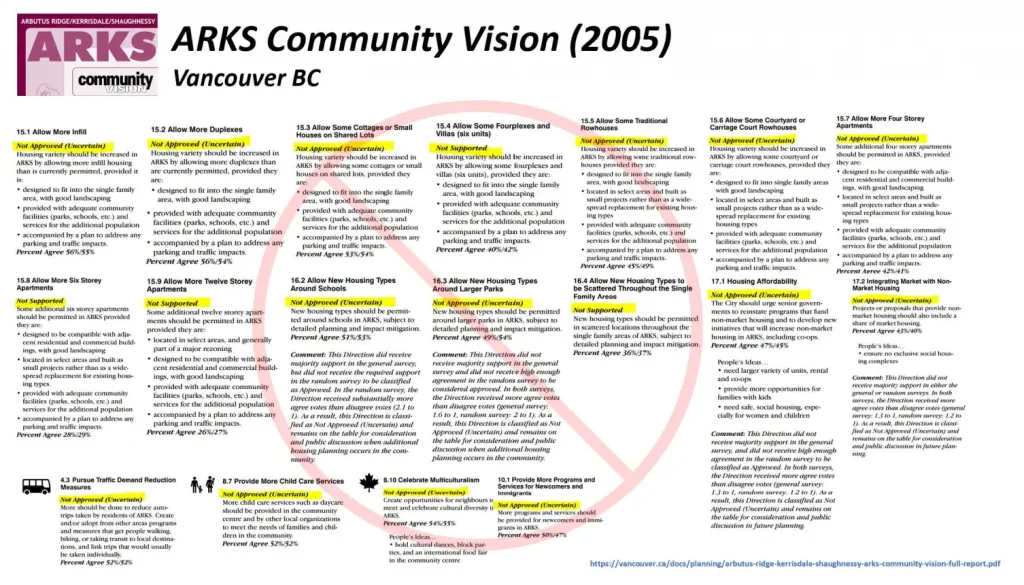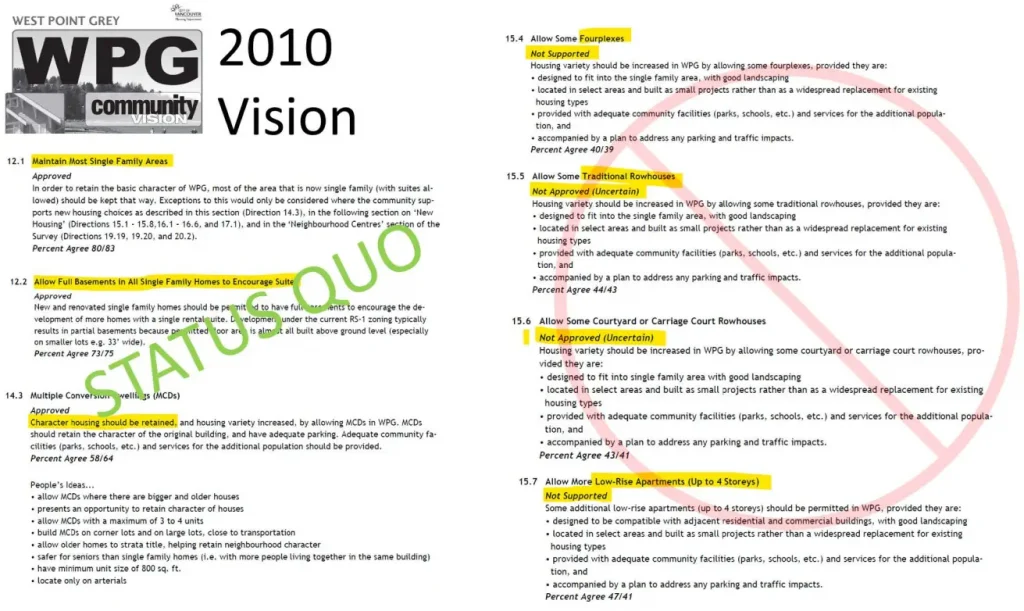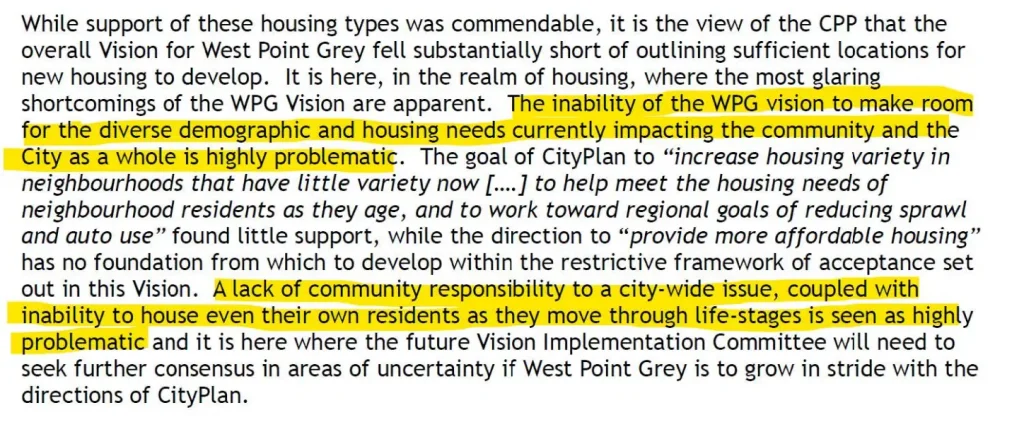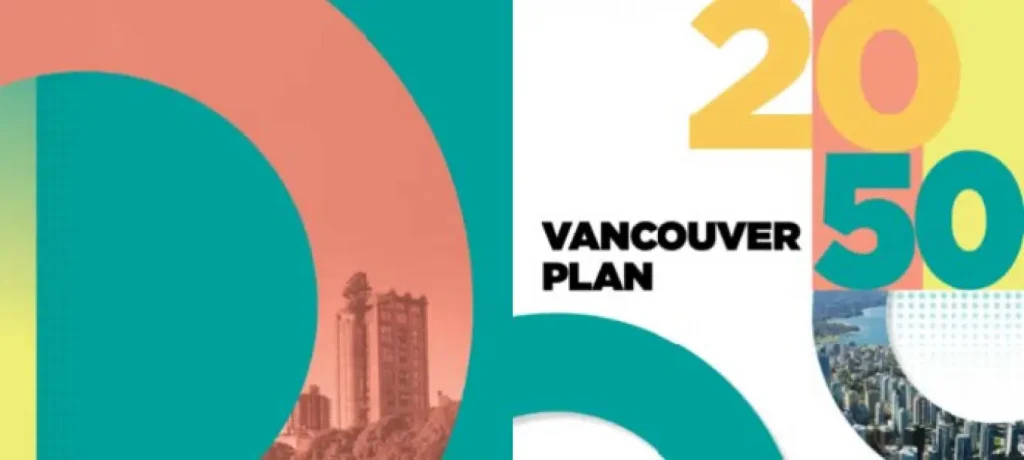On July 22, 2022 Vancouver City Council approved the NEW Vancouver Plan, finally establishing an overarching land use framework for the city that sets in motion new opportunities for more multifamily housing across the city. Some people complain that the recent planning process privileged city-wide interests over the interests of neighbourhoods (or the groups that purported to represent neighbourhood interests). However, at this inflection point in the City’s history, I think it’s helpful to look at a couple of the old “City Plan Visions” from the early 2000s to see why a course correction was desperately needed.
The OLD City Plan & Community “Visions”
Former City Co-Director of Planning Ann McAfee has written an excellent detailed history of the old 1990s City Plan process, its challenges, and its successes (1). Some 100,000 people reported participating in the 2.5-year City Plan process at a cost of $3.4M. The process was very bottom up as the planning department organized citizen Ideas Fairs and neighbourhood planning circles to canvass citizens for their ideas on how the city should grow and evolve. Some planners however criticized the plan as focusing more on polling than planning through its four stages:
Step 1. People Generate Ideas (November 1992–March 1993)
Step 2. People Discuss and Review Ideas (April–June 1993)
Step 3. People Make Choices (February–August 1994)
Step 4. People Discuss the Draft Plan with Council (February–June 1995)
City-Wide Priorities, But No Land Use Change
McAfee asserts that the 1990s City Plan was successful in identifying what Vancouver citizens wanted to retain as well as new directions which included: support for increased housing choice throughout the city, including in single-family areas; maintaining a diverse economy by preserving industrial lands; and implementing new ideas such as greenways, community policing, Neighbourhood Integrated Service Teams and neighbourhood centres. However, she also shared criticism that the old City Plan ‘provided a destination, but no route’. It lacked maps and zoning schedules, and it would require another massive planning effort (a dozen years!!!) to define how the City Plan would be implemented by each Neighbourhood in the City.
Community Visions
The Community Visions program that ran for 12 years following City Plan (1998-2010) were meant to implement the City Plan approved by council, each neighbourhood in its unique way, owing to perceived differences in the look and feel of each neighbourhood. As someone who has lived in Vancouver for 30+ years and studied the evolution of the City, I find that idea a bit funny. Most of the suburban city is a predictable grid of 33, 40 and 50 foot lots 120 ft deep with 66 ft wide streets, 100 to 120 ft arterial roads, 20 ft wide lanes and a rather predictable array of Craftsman homes and Vancouver Specials. Yes there are differences between neighbourhoods, but they share far more in common, particularly high housing prices and low density use.
Nine area planning programmes were completed between 1998–2010 with resident committees to ensure the plans included ‘broad community input and priorities’. City Perspectives Panels of residents from other communities monitored the impact of plans on adjacent neighbourhoods. This was an attempt to marry top down City Plan priorities with the Bottom Up view from the neighbourhoods.
The Bottoms Won: ‘NIMBYS’ Promoted to ‘NOPES’
My view is that the city-wide priorities and interests were swept aside by City Plan process fatigue and by very narrow neighbourhood interests. Two of the worst offenders were the Arbutus Ridge Kerrisdale & Shaughnessy (ARKS) Vision (2005) which rejected most if not ALL of the housing choices that had earlier received City-Wide support and the 2010 West Point Grey Vision.
The ARKS Vision document sprawls across many pages so I cut-and-pasted the ARKS Community Vision position on the various City Plan directions below. I think it transcends NIMBY, past BANANA (Build Absolutely Nothing Anywhere Near Anything) and gets into solid NOPE territory (‘Not On Planet Earth’) – turning down infill cottages, low rise apartments, mid-rise apartments and more intense forms of development as well as rejecting initiatives to reduce car use, add daycare spaces, or celebrate and support multiculturalism.

Just next door to ARKS, the West Point Grey Plan (2010) was almost as hostile to City-wide planning priorities.

The Citywide Perspectives review panel feedback on WPG Vision (Appendix E) was scathing:

A New Chapter? Vancouver Plan 2050
For decades these old Neighbourhood Visions have been terribly out-of-synch with City-wide priorities and have frustrated new development that would have better met changing demographic, economic and environmental needs.
The Vancouver Plan was approved in July 2023 and finally all of Vancouver’s maladaptive Community Visions were repealed in December 2023. I am glad I saved a copy of them to remind us all of how bad they really were. Unfortunately the Vancouver Plan – like many of the City’s planning policies (the recent Broadway Plan for example) does not actually change land uses schedules. There is still a lot of work ahead and most new development proposals still require a 1+ year rezoning process – but hey, at least it’s a fresh start!

https://vancouverplan.ca/wp-content/uploads/Vancouver-Plan-web-version-spreads-2023-2.pdf

